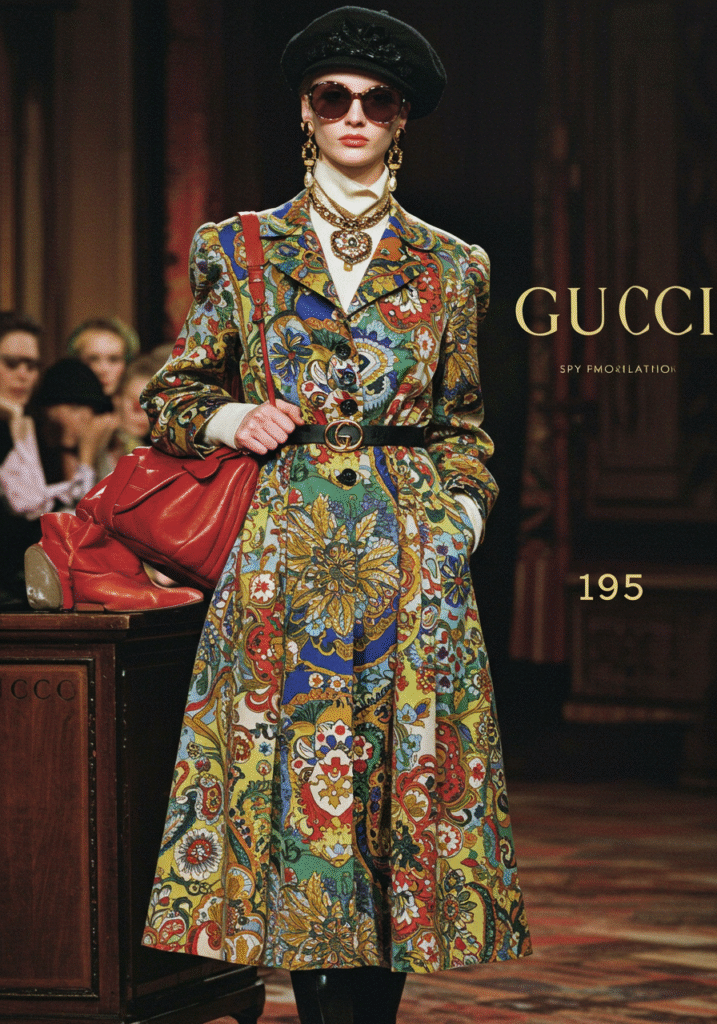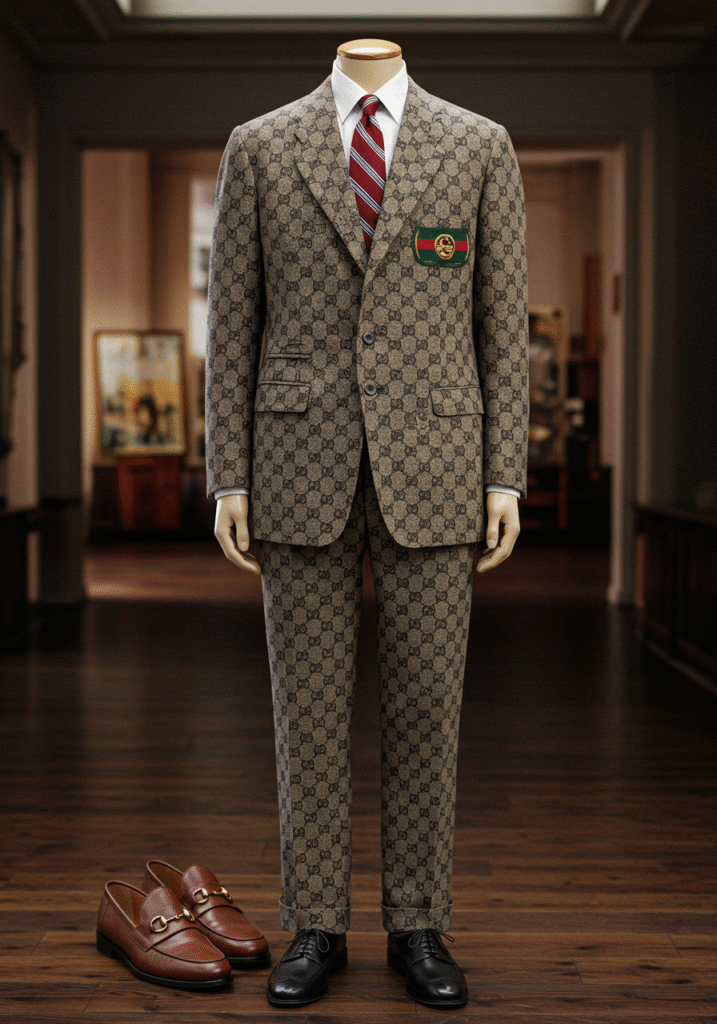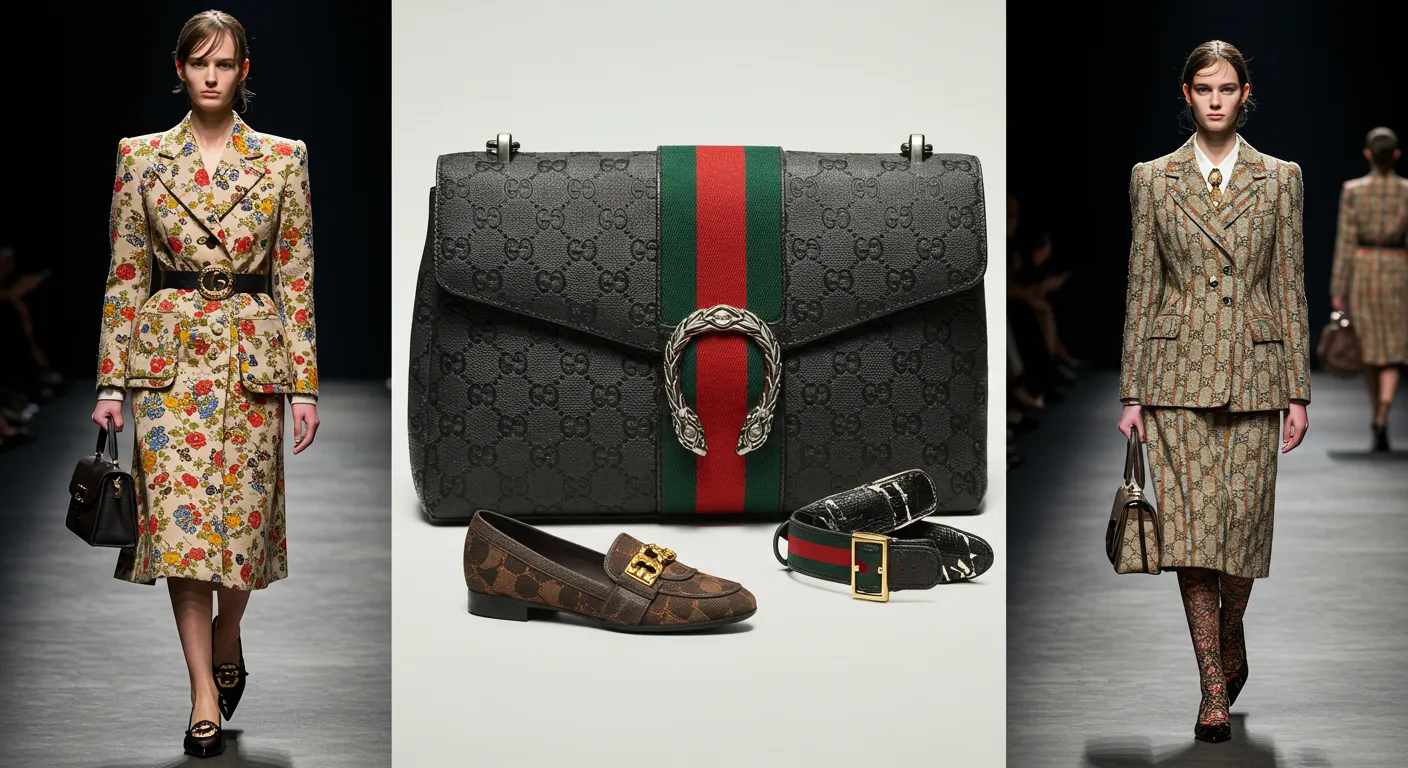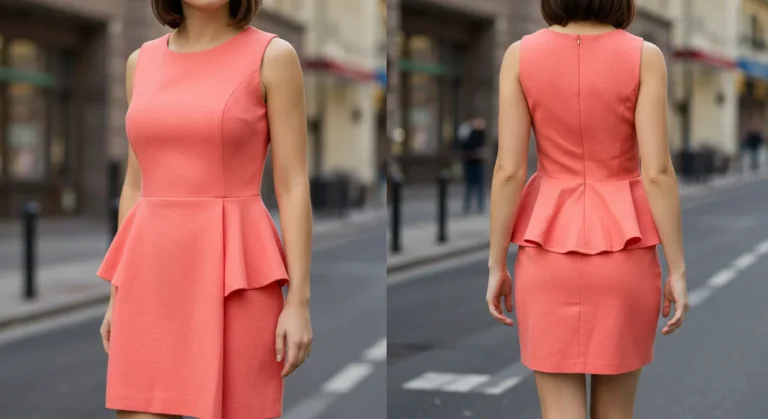1995 Gucci The best Year That Changed Fashion Forever
Introduction
In the world of high fashion, few years are remembered as sharply as 1995 — and even fewer brands are as synonymous with that pivotal moment as Gucci. At the intersection of cultural transformation and creative rebirth, 1995 marked the beginning of a fashion revolution. This was the year that set Gucci on a new path, shifting it from a fading legacy house to the epicenter of global luxury and sex appeal. And at the heart of it all was one man: Tom Ford.
But to fully appreciate why 1995 Gucci matters — and why it continues to be referenced by designers, stylists, and collectors nearly 30 years later — we must understand the cultural context of the 1990s, Gucci’s pre-Ford identity, and the fashion world’s readiness for disruption.
A Brand in Transition
Before 1995, Gucci was in a difficult place. The brand had long relied on its equestrian heritage, canvas logos, and classic Italian craftsmanship, but by the early ‘90s, the glamour had started to fade. Internal family disputes, lackluster creative direction, and increasing competition from younger fashion houses like Versace and Dolce & Gabbana made Gucci seem outdated to a new generation of consumers.
Fashion in the early 1990s was split: minimalism reigned on some runways (thanks to Calvin Klein and Jil Sander), while others leaned into maximalism with bold prints and sex appeal. Gucci, however, seemed caught in the middle — stuck between heritage and reinvention. Enter 1995, a year that would become synonymous with reinvention, bold decisions, and ultimate brand resurrection.

Why 1995 Was a Fashion Tipping Point
The world of style was ready for a shake-up. The early ’90s had been about pared-back silhouettes, normcore aesthetics, and quiet luxury. But beneath the surface, a cultural hunger was building — one that demanded confidence, sensuality, and unapologetic glamour. The fashion industry was craving a bold new direction, and Tom Ford’s Gucci delivered exactly that.
In 1995, Gucci introduced a daringly sensual collection that broke all the rules — silky shirts unbuttoned to the navel, tailored velvet trousers, and sleek, monochrome designs that oozed confidence. The house leaned into the sexual revolution of fashion, embracing the concept that elegance could be provocative, and that luxury could have attitude.
This was not the Gucci of equestrian straps and conservative silhouettes. This was Gucci for the new era — raw, radiant, and unforgettable.
The Cultural Landscape in 1995
It wasn’t just fashion that was changing in 1995. Pop culture was exploding with new musical icons, daring film performances, and an overall aesthetic shift toward edginess and individuality. From Madonna’s provocative stage looks to the rise of the supermodel era (with names like Naomi Campbell and Kate Moss defining beauty standards), the world was moving toward an image of empowered, stylish rebellion.
Tom Ford’s vision for Gucci tapped directly into this cultural current. He understood that fashion was no longer just about what you wore — it was about how it made you feel and how it made others see you. In 1995, wearing Gucci wasn’t just a style statement — it was a power move.
Setting the Stage for a New Gucci
The importance of 1995 lies not only in what Gucci created that year, but in the philosophy it unleashed. It was the beginning of Gucci as a modern fashion icon — not just a brand with a legacy, but a brand that would shape the future of fashion.
Ford’s 1995 collection served as a reset button, turning the fashion house into a cultural juggernaut practically overnight. It paved the way for Gucci to become a go-to label for celebrities, a centerpiece of pop culture, and a blueprint for how heritage brands could successfully modernize without losing their DNA.

Why It Still Matters
Nearly three decades later, 1995 remains the turning point that defined the house of Gucci. From archive collections being reissued to present-day designers referencing its daring silhouettes, the influence of 1995 still echoes across runways, wardrobes, and editorial spreads.
Whether you’re a fashion historian, style enthusiast, or someone seeking to understand how branding genius meets cultural timing, 1995 Gucci is essential knowledge. It is proof that bold vision, impeccable execution, and an understanding of the cultural pulse can rewrite a brand’s legacy — and the fashion world’s future.
The Tom Ford Revolution
In the grand narrative of luxury fashion, few names spark as much transformation and cultural shift as Tom Ford. His arrival at Gucci wasn’t just a change in creative direction — it was a resurrection. By 1995, Ford was no longer just an American designer working for an Italian fashion house; he was the savior of Gucci, an image-maker who would go on to define the decade. The story of 1995 Gucci is incomplete without examining the seismic wave Tom Ford triggered in the luxury fashion world — and how it still influences branding, styling, and identity today.
From Background Role to Center Stage
Tom Ford joined Gucci in 1990 as a women’s ready-to-wear designer. At the time, Gucci was suffering from a creative identity crisis. Ford initially worked under Dawn Mello, a respected figure who had helped rejuvenate Bergdorf Goodman. But as internal changes occurred — including the appointment of Domenico De Sole as CEO — Ford’s bold ideas began to move from background suggestions to headline collections.
By 1994, he had officially become Creative Director. And by 1995, he had staged one of the most pivotal fashion shows of the decade. His Fall/Winter 1995 collection would become the turning point that altered not only Gucci’s course, but the trajectory of luxury fashion as a whole.
Sex Appeal Meets Sophistication
Ford understood one fundamental truth: fashion isn’t just about clothing — it’s about desire. While many European houses in the early ’90s were stuck between minimalism and archival nostalgia, Ford had something else in mind. He infused Gucci with raw sex appeal, but did it with refinement. The 1995 collection featured:
- Skin-tight satin shirts, often unbuttoned dangerously low
- Velvet flared pants, cut to elongate and seduce
- Glossy leather jackets, styled with effortless glam
- Monochromatic looks that felt both futuristic and retro
This wasn’t vulgar. It was slick, polished sensuality — the kind that spoke of wealth, confidence, and rebellion. The silhouettes hugged the body, the fabrics shimmered under runway lights, and the color palette dripped in black, deep cherry, champagne, and bronze — a luxury mood board of its own.
The Model Moment That Shook Milan
The 1995 Milan runway show was more than just a display of garments — it was a cultural event. Ford’s models were not styled like conventional fashion mannequins. They were powerful characters, walking with an air of erotic confidence, styled with glossy waves, red lips, and commanding presence.
Supermodels like Amber Valletta and Kate Moss helped cement the look. They weren’t selling clothes; they were selling a fantasy — one of seduction, money, and modern royalty. The press couldn’t stop talking about it. Buyers tripled their orders. Celebrities took notice. And overnight, Gucci became relevant again.
From Creative Direction
What makes Tom Ford’s impact in 1995 so significant is that he didn’t just design — he curated identity. He unified every touchpoint of the Gucci brand:
- Clothing: Luxurious, sleek, and confidently sexy
- Runway styling: Edgy but elegant, dramatic but wearable
- Ad campaigns: Shot by Mario Testino and other iconic photographers, the campaigns oozed provocative modernism
- Store design & ambiance: Velvet-covered walls, mood lighting, and a sensory-driven retail experience
This level of brand cohesion was unheard of at the time. Ford wasn’t just interested in selling dresses; he was selling the Gucci lifestyle — and in doing so, he created one of the most powerful luxury brand personas in history.
Business Meets Brilliance
From a financial standpoint, the 1995 Gucci transformation led by Ford was a case study in revival. Sales skyrocketed. Media coverage increased exponentially. Ford’s vision was so effective that Gucci’s valuation grew from near-collapse to multi-billion-dollar empire within a few years. The fashion house became a central player in what would soon be the Gucci Group, acquiring and partnering with other brands and forming the core of what is now Kering.
Tom Ford didn’t just save Gucci — he built the blueprint for how luxury brands could bounce back, rejuvenate their cultural relevance, and dominate the fashion narrative.
Legacy of the 1995 Moment
Ford’s 1995 collection is often cited as one of the most influential in fashion history. Why? Because it broke the mold of what was acceptable and expected from a heritage brand. He dared to inject sex and confidence into a legacy of leather and restraint.
Designers today still draw inspiration from his bold moves — the sharp tailoring, the silk shirts, the unapologetic sensuality. Major fashion houses continue to chase that “1995 Gucci moment,” and many have tried to replicate it. But the original remains untouched in its raw, confident brilliance.
The Iconic 1995 Gucci Collection
The 1995 Gucci collection wasn’t just another seasonal fashion drop — it was a revolution in textile and tailoring. This was the collection that placed Gucci firmly back on the fashion map, not just as a legacy label but as a visionary luxury brand redefining how the world dressed, posed, and even thought. At the heart of it all was Tom Ford’s first fully realized runway collection, marking the boldest rebranding in fashion’s modern era.
Let’s dissect this iconic collection, piece by piece, look by look — and see why 1995 remains a defining timestamp in fashion history.
Satin Shirts
If there’s one item that captures the essence of 1995 Gucci, it’s the ultra-lustrous satin shirt. These weren’t your typical silky blouses. They were body-skimming, chest-baring, slightly oversized but tailored at the cuffs — oozing eroticism and corporate rebellion.
Often styled without bras and paired with tailored trousers or velvet flare pants, these shirts became a universal symbol of sexy sophistication. Worn by both women and men in Ford’s vision, the shirts blurred gender lines, introduced luxury minimalism with a provocative edge, and instantly became status symbols among celebrities and fashion editors alike.
Velvet Flare Trousers
Ford’s inclusion of high-waisted velvet flares nodded to the 1970s but landed squarely in the mid-‘90s zeitgeist. These pants hugged the hips, then exploded outward in rich velvet textures — a sartorial rebellion against the minimalism dominating other runways.
What made them iconic? It was how they transformed silhouettes — making legs look longer, waists look smaller, and movements more sensual. They were paired with metallic tops, tailored jackets, and silk camisoles, cementing a new standard for eveningwear and power dressing.
White Jersey Gown
Possibly the most talked-about moment of 1995 Gucci was Amber Valletta’s closing look: a white jersey halter gown, open-back, ruched at the hips, held together with a metallic clasp. It was simple in construction but monumental in effect.
This gown redefined red carpet elegance — not by adding embellishment, but by removing everything unnecessary. It was body-conscious, confident, and camera-ready — a Tom Ford signature. Celebrities began requesting Gucci gowns by name, and a new era of red carpet glamour was born.
Gucci Loafers Reimagined
The Gucci loafer has long been a staple, but Ford gave it an electric new life. He introduced platform versions, sleek patent leather variations, and even fur-lined options (later fully realized in the early 2000s).
The 1995 loafer wasn’t just a shoe — it was a subversion of traditional Italian menswear, now adopted by women in suits, stylists, and editors alike. It blurred luxury with utilitarian fashion, setting the tone for what high-low dressing could look like.
The Gucci Logo Reborn
While Ford wasn’t heavy-handed with logos, the subtle reworking of the Gucci Gs in accessories and belts became an underground flex. Instead of overt branding, there was a sleek nod to heritage — placing Gucci in conversations about luxury without screaming for attention.
This was a precursor to today’s “quiet luxury” trend — where silhouettes, styling, and posture speak louder than visible labels.
Makeup, Hair,
A huge part of the 1995 collection’s impact was how models were styled. Hair was high-gloss and retro-chic, often parted deeply or slicked back. Lips were deep reds or dark nudes, with bronzed skin and sharp cheekbones completing the look.
The vibe was unmistakable: polished but predatory, elegant but undeniably edgy. It wasn’t just what the models wore — it was how they walked, stared, and posed. This would define Gucci’s aesthetic through the late ’90s and into the 2000s.
Cultural Impact
The 1995 Gucci collection became more than fashion — it was a cultural trigger. Magazines devoted entire spreads to it. Celebrities demanded front-row seats and personal fittings. High-street brands copied it. The runway looks translated effortlessly into editorial, and streetwear brands began mimicking the sensuality, layering, and texture play seen in Milan that season.
Ford’s ability to marry sex with luxury, heritage with high fashion, and nostalgia with innovation remains a masterclass in branding and style.

Why 1995 Still Matters
The legacy of the 1995 Gucci collection lives on in modern fashion. From the recent Y2K revival to the return of tailored glamour and minimalist seduction, everything that defines today’s luxury ethos was seeded in this collection.
Whether it’s a velvet suit on the runway or a backless white dress on the red carpet, the fingerprints of Ford’s 1995 Gucci era are all over the current fashion landscape. Brands still emulate the clarity, cohesion, and confidence of that collection — but the original remains untouched.
FAQs
What made the 1995 Gucci collection so iconic?
The 1995 Gucci collection marked a bold reinvention of the brand under creative director Tom Ford. It introduced a seductive mix of minimalism, 1970s glamor, and sharp tailoring that broke away from Gucci’s traditional image. The collection’s sex appeal, sleek silhouettes, and cinematic runway presentation revolutionized luxury fashion, making it an instant classic.
Who was the designer behind Gucci in 1995?
The visionary behind Gucci’s 1995 transformation was Tom Ford. Promoted to creative director in 1994, Ford’s 1995 collection was his breakthrough moment, blending bold sensuality with refined simplicity. His work redefined modern luxury and placed Gucci at the center of global fashion conversation.
How did 1995 Gucci influence today’s fashion trends?
The 1995 Gucci aesthetic — sensual, tailored, and empowered — laid the groundwork for many modern trends. From sleek blazers and satin shirts to minimalist silhouettes and vintage-inspired looks, designers across the industry still draw influence from Ford’s 1995 vision. The era’s bold energy and empowered femininity are echoed in countless runways today.
Why is vintage Gucci from 1995 so valuable?
1995 Gucci pieces are highly sought-after because they represent a turning point in fashion history. They reflect Tom Ford’s early genius and the rebirth of a heritage brand. Vintage collectors and fashion enthusiasts value these items not only for their design but also for their cultural significance and rarity.
Where can I buy authentic 1995 Gucci pieces today?
Authentic pieces from the 1995 Gucci collection can occasionally be found through high-end vintage retailers, luxury resale platforms like The RealReal or Vestiaire Collective, and select auctions. Due to their iconic status, these items often come at a premium and should be authenticated before purchase.
Conclusion
When we trace the evolution of luxury fashion, certain years stand out not just for what was worn, but for how they reshaped the language of style, culture, and confidence. The year 1995, under the newly appointed creative direction of Tom Ford at Gucci, marked one of the most seismic shifts in fashion history — a metamorphosis that turned a legacy label into a lust-driven, celebrity-adored, editorial darling. The ripple effect of that year is still palpable nearly three decades later.
Let’s delve into why 1995 Gucci continues to dominate not only nostalgic memory but also modern fashion philosophy.
Tom Ford’s Creative Disruption
Before 1995, Gucci was known for its equestrian roots, travel trunks, and classic leather craftsmanship. Respectable? Yes. Riveting? Not anymore. Enter Tom Ford, a visionary who knew that in order to revive Gucci, he needed to do more than update a logo — he needed to rewrite the brand’s DNA.
Ford’s genius was in understanding the emotional resonance of clothing. He fused sex appeal, retro glamor, and minimalist elegance to create garments that weren’t just beautiful — they were powerful. Women didn’t just look stylish in Gucci’s 1995 collection — they looked untouchable, magnetic, unforgettable.
This was style as a weapon — and Ford handed that weapon to anyone willing to own their allure.
A Blueprint for Modern Fashion
It’s no exaggeration to say that today’s fashion brands still pull from the 1995 Gucci playbook. Whether it’s Saint Laurent’s smoky tailoring, Balmain’s sharp sensuality, or even Skims’ jersey minimalism, the echoes of Ford’s work are everywhere. The mix of vintage silhouettes, high-luxe fabrics, and sharp styling — all birthed in that pivotal year — set a new blueprint for brand transformation.
Gucci’s 1995 moment taught the industry that revival wasn’t about pandering to the past, but about reclaiming the future through attitude and innovation.
The Rise of Fashion
Before social media, fashion had to speak loudly without algorithms. Ford understood this. His 1995 Gucci show felt cinematic, with models walking like they were in a Scorsese film. Hair slicked back. Eyes smoky. Movements deliberate. The garments weren’t static — they lived, breathed, seduced. Each model told a story. Each fabric shimmered with intent.
This collection was fashion as entertainment, before that was even a thing. The era of fashion shows being filmed, streamed, or memed hadn’t started yet, but Ford laid the groundwork by injecting narrative and emotion into every ensemble. That’s why even years later, the 1995 collection isn’t just remembered — it’s revered.
Cultural Influence
Beyond the clothes, 1995 Gucci became a cultural marker. Musicians, actors, socialites, and fashion editors couldn’t stop talking about it. Madonna wore it. Gwyneth Paltrow embodied it. Amber Valletta walked it. The mainstream didn’t just adopt the style — they yearned to become part of it.
That collection introduced a level of aspiration that was intimate, not distant. It said: “You can be luxurious and sensual at the same time. You can be minimal and bold. You can rewrite your own narrative.”
And that’s precisely what consumers wanted in the mid-‘90s — and still do today
A Legacy of Empowerment
Ultimately, what made 1995 Gucci revolutionary wasn’t just the garments or the runway. It was the empowerment stitched into every piece. Women were dressing for themselves, not the male gaze or societal conventions. The cut of the white jersey gown, the slick satin shirt, the power flared trousers — they all said: “I’m in charge, and I know it.”
That sense of confidence and autonomy has been carried forward by generations. From modern power-dressing to today’s red carpet style and minimalist influencer trends, the DNA of Ford’s Gucci continues to inform and inspire. It’s more than nostalgia — it’s a framework.
Why It Still Matters in 2025
In today’s world of fast fashion, fleeting trends, and algorithmic aesthetics, the 1995 Gucci collection reminds us that timelessness is born from boldness. Ford didn’t follow what was trending — he created what would become the trend. That’s why, nearly 30 years later, the collection still feels fresh, relevant, and utterly powerful.
As designers today search for the next big moment, they would do well to study 1995 Gucci — not to replicate it, but to understand what made it unforgettable: clarity of vision, emotional design, and unwavering confidence.







